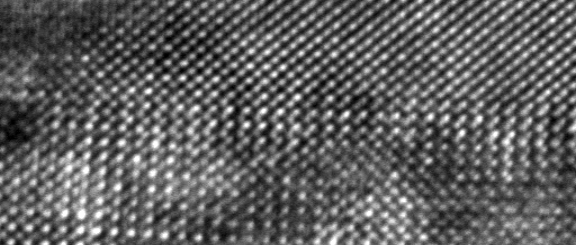Salvador
Research
Group
Research
Group

Research Interests
Overview
New and optimized materials are important for both technological applications and fundamental scientific investigations. My research group focuses on the fabrication, characterization, and simulation of advanced inorganic materials having specific structural and physical properties, as well as determining structure-property relationships in those materials. We are actively working in three topical areas:
Photocatalysts for solar fuel production,
Electrocatalysts in electrodes of solid oxide fuel cells (SOFCs),
Synthesis of new materials as thin films using epitaxy.
We are a very collaborative group, especially with other groups at Carnegie Mellon University, the National Energy Technology Laboratory, and the Laboratoire CRISMAT (France).
Materials Fabrication
We are developing materials fabrication methods using physical vapor deposition, especially pulsed laser deposition (PLD), to synthesize new and metastable single-layer, multilayer, and artificially-layered heterostructures, as well as to engineer surface and materials properties. A particular emphasis is placed on metastable materials and artificially designed structures that are stable only as epitaxial thin films. Recently our focus has been on developing combinatorial substrate epitaxy to design new materials and to uncover fundamental relationships in epitaxy, including eutaxial film growth.
We are also developing methods for fabrication of multi-scale ceramics for energy conversion, where both crystalline structure and morphological form play important roles in determining functionality. We are exploiting wet chemical methods to prepare nanoscale mesoporous coatings on micro-crystals of light absorbing photocatalysts for solar fuel conversion and in micro-porous electrodes of SOFCs. Emphasis is placed on optimizing the structural legnth scales for the manifold processes required for efficient energy conversion.
Materials Characterization
We are interested in characterization of the structure and defects in materials, especially in understanding the interplay between defects in heterostructured materials. We are interested in the quantification of microstructure and its relationship to properties, including activity and degradation of SOFC electrodes, oxygen exchange in thin films electrocatalysts, photochemical behavior of heterostructured materials, and hardness of nitride superlattice coatings. In most cases, we make correlations between the structure of our tailor-made materials and the physical properties of interest to a specific application. Recently our focus has been on exploiting advanced scanning electron mciroscopy (SEM) methods, including electron backscatter and transmission Kikuchi diffraction for thin film characterization, and Xe-plasma focused ion beam (FIB) serial sectioning combined with SEM for reconstructing mesoscale volumes of solid oxide fuel cell.
Materials Simulation
Understanding the behavior of complex material systems requires advanced simulations. As such, we have developed or implemented advanced simulation tools through collaborative efforts, including: developing generative adversarial networks (GANs) to learn the microstructure of SOFCs; implementing high-performance computations of microstructurally resolved electrochemistry, using the MOOSE framework on supercomputers; applying forward modeling and dictionary indexing codes for thin film characterization; finite element modeling of the photoelectrochemical performance of coated ferroelectric photocatalysts and of defect motion in oxides for data storage applications, using commercial software; predicting the stability of polymorphs and thin films, using density functional theory (DFT).
New and optimized materials are important for both technological applications and fundamental scientific investigations. My research group focuses on the fabrication, characterization, and simulation of advanced inorganic materials having specific structural and physical properties, as well as determining structure-property relationships in those materials. We are actively working in three topical areas:
Photocatalysts for solar fuel production,
Electrocatalysts in electrodes of solid oxide fuel cells (SOFCs),
Synthesis of new materials as thin films using epitaxy.
We are a very collaborative group, especially with other groups at Carnegie Mellon University, the National Energy Technology Laboratory, and the Laboratoire CRISMAT (France).
Materials Fabrication
We are developing materials fabrication methods using physical vapor deposition, especially pulsed laser deposition (PLD), to synthesize new and metastable single-layer, multilayer, and artificially-layered heterostructures, as well as to engineer surface and materials properties. A particular emphasis is placed on metastable materials and artificially designed structures that are stable only as epitaxial thin films. Recently our focus has been on developing combinatorial substrate epitaxy to design new materials and to uncover fundamental relationships in epitaxy, including eutaxial film growth.
We are also developing methods for fabrication of multi-scale ceramics for energy conversion, where both crystalline structure and morphological form play important roles in determining functionality. We are exploiting wet chemical methods to prepare nanoscale mesoporous coatings on micro-crystals of light absorbing photocatalysts for solar fuel conversion and in micro-porous electrodes of SOFCs. Emphasis is placed on optimizing the structural legnth scales for the manifold processes required for efficient energy conversion.
Materials Characterization
We are interested in characterization of the structure and defects in materials, especially in understanding the interplay between defects in heterostructured materials. We are interested in the quantification of microstructure and its relationship to properties, including activity and degradation of SOFC electrodes, oxygen exchange in thin films electrocatalysts, photochemical behavior of heterostructured materials, and hardness of nitride superlattice coatings. In most cases, we make correlations between the structure of our tailor-made materials and the physical properties of interest to a specific application. Recently our focus has been on exploiting advanced scanning electron mciroscopy (SEM) methods, including electron backscatter and transmission Kikuchi diffraction for thin film characterization, and Xe-plasma focused ion beam (FIB) serial sectioning combined with SEM for reconstructing mesoscale volumes of solid oxide fuel cell.
Materials Simulation
Understanding the behavior of complex material systems requires advanced simulations. As such, we have developed or implemented advanced simulation tools through collaborative efforts, including: developing generative adversarial networks (GANs) to learn the microstructure of SOFCs; implementing high-performance computations of microstructurally resolved electrochemistry, using the MOOSE framework on supercomputers; applying forward modeling and dictionary indexing codes for thin film characterization; finite element modeling of the photoelectrochemical performance of coated ferroelectric photocatalysts and of defect motion in oxides for data storage applications, using commercial software; predicting the stability of polymorphs and thin films, using density functional theory (DFT).